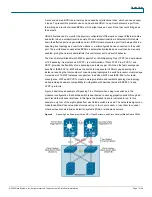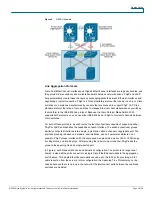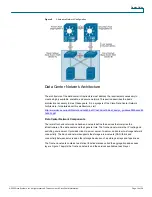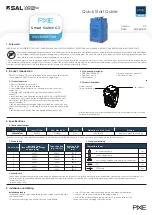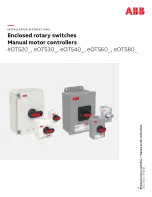
Design Guide
© 2008 Cisco Systems, Inc. All rights reserved. This document is Cisco Public Information.
Page 18 of 28
Management Options
The Cisco Catalyst Blade Switch 3020 switch is manageable with the following methods:
●
HTTP-based device-manager GUI
●
SNMP-based management applications
●
Cisco IOS Software CLI
The embedded device manager on the Cisco Catalyst Blade Switch 3020 provides a GUI to
configure and monitor the switch through a Web browser. This scenario requires using either in-
band or out-of-band management and enabling the HTTP or HTTPS server on the switch. The
HTTP server and SSL are enabled by default.
SNMP-compatible management utilities are supported through a comprehensive set of MIB
extensions and through four Remote Monitoring (RMON) groups. CiscoWorks 2000 and HP
OpenView are two such management applications. SNMP Versions 1, 2, and 3 are available on the
switch (Cisco IOS Software Crypto image).
The CLI delivers the standard Cisco IOS Software interface over Telnet or the console port. Cisco
recommends that you use the Secure Shell (SSH) Protocol for CLI access.
Note:
For more information about the embedded device manager, refer to the online help on the
switch CLI. For more information about the management options for the HP c-Class BladeSystem,
please visit:
http://h18004.www1.hp.com/products/blades/components/management.html
HP c-Class BladeSystem iLO Connectivity
The iLO provides remote-management capabilities and is standard with all c-Class server blades.
Remote power, console, and diagnostics are just a few of the advanced functions iLO provides.
The HP c-Class BladeSystem provides two methods to access this management interface through
its Onboard Administrator. The iLO connection is independent of the Cisco Catalyst Blade Switch
3020. The blade-server’s Onboard Administrator located on the back of the enclosure provides
access to each of the iLO interfaces through a single Ethernet cable. A redundant Onboard
Administrator is also available.
Design and Implementation Details
Network Management Recommendations
An OOB network is recommended for managing the Cisco Catalyst Blade Switch 3020. OOB
management provides an isolated environment for monitoring and configuring the switch. Isolation
is achieved by deploying a physically separate management network or by logically separating the
traffic with management VLANs.
The Cisco Catalyst Blade Switch 3020 has 8 external Gigabit Ethernet ports; any of them may be
used to support network-monitoring devices and network-management traffic. Using secure
protocols, such as SSH or HTTPS, maintains the integrity of communications between the switch
and the management station. The console port positioned at the front of the Cisco Catalyst Blade
Switch 3020 is another option for connectivity to the OOB network.




